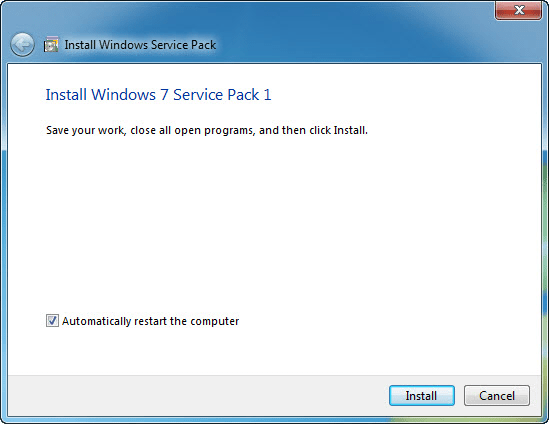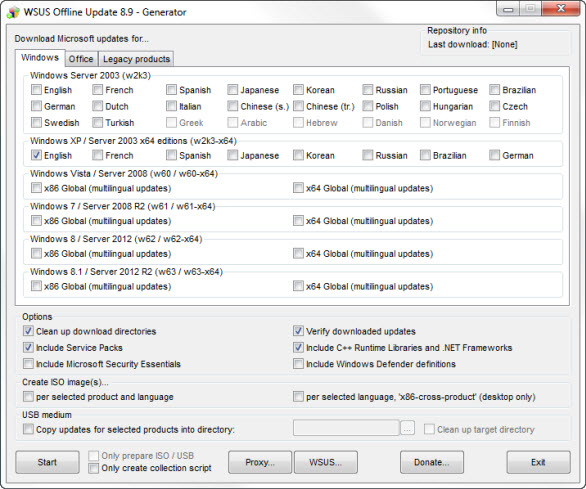Windows 7 Alle Versies X86 X64 Nl/dutch
Dutch/Nederlands Windows 7 Alle Edities Nog geen SP1 of Automatische activatie, ben hiermee bezig. Alle Edities x86 Starter Home Basic Home Premium Professional Ultimate x64 Home Basic Home Premium Professional Ultimate Activator zit in de ISO, samen met wat losse software. Besturingssysteem Versies: Windows XP, 7, 8, 8.1, 10 (x64, x86) Categorie: Intel chipsets Subcategorie: (R) 8 Series LPC Controller (LPC DID fusing) - 9C5F chipsets.
As I’m building or extending a number of Hyper-V Clusters in the next 4 months I’m gathering/updating my list with the Windows 2008 R2 SP1 hotfixes relating to Hyper-V and Failover Clustering. Microsoft has once published but that list is not kept up to date, the two hotfixes mentioned are in the list below. I also intend to update my list for Windows Server 2008 SP2 and Windows 2008 R2 RTM. As I will run into to these and it’s nice to have a quick reference list.I’ll include my current list below.

Windows 7 SP1 Language Packs Direct Download Links (KB2483139) Now Microsoft has released the Language Packs for Windows 7 SP1 (KB2483139). Only Windows 7 Ultimate and Windows 7 Enterprise can install more than one MUI language packs but I have already written about how to install language pack on non-supported Windows 7 like Windows 7 Starter Edition or Windows 7 Home Basic Edition.
Some of these fixes are purely related to Hyper-V, some to a combination of hyper-V and clusters, some only to clustering and some to Windows in general. But they are all ones that will bite you when running Hyper-V (in a failover cluster or stand alone). Now for the fun part with some hotfixes I’ll address in this blog post. Confusion Take a look at the purple text and the green text hotfixes and the discussion below. Anyone who’s been doing virtualization with Hyper-V on Windows 2008 R2 has a good change of having seen the issue described inYou install the Hyper-V role on a computer that is running Windows Server 2008 R2.
You run a virtual machine on the computer. You use a network adapter on the virtual machine to access a network. You establish many concurrent network connections, or there is heavy outgoing network traffic.In this scenario, the network connection on the virtual machine may be lost. Additionally, the network adapter is disabled.Note You have to restart the virtual machine to recover from this issue.We’ve seen this one on VM’s that have indeed a lot of outgoing traffic. In our environment the situation looks like this:.
You can access the VM with Hyper-V Manager or SCVMM but not via RDP as all Network connectivity is lost. The status the guest NIS is always “Enabled” but there is no traffic/connectivity. You can try to disable the NIC but this tales a very long time and when you try to enable it again this never succeeds. Disconnecting the NIC form the virtual network and connecting it again doesn’t help either. You need to shut down the host but this takes an extremely long time, so long you really can’t afford to wait if it ever succeeds.
It seems to hang at shutting down with a “non whirling whirly”. So finally you’ll power off the VM and start it up again. Apart from entries related to having not connectivity the event logs are “clean” and there is no indication as to what happened.Well this exact same issue is back with Windows 2008 R2 SP1. That’s the bad news.
The good news is there is a hotfix for it already so you can fix it. You can read up on this issue in and request the hotfix. Instructions to get the hotfix are in there as well as a reference to the previous fixes for Windows 2008 R2 RTM.Consider the following scenario:. You install the Hyper-V role on a computer that is running Windows Server 2008 R2 Service Pack 1 (SP1).
You run a virtual machine on the computer. You use a network adapter on the virtual machine to access a network. You establish many concurrent network connections. Or, there is heavy outgoing network traffic.In this scenario, the network connection on the virtual machine may be lost. Additionally, the network adapter may be disabled.Notes.
You must restart the virtual machine to recover from this issue. This issue can also occur on versions of Windows Server 2008 R2 that do not have SP1 installed. To resolve the issue, apply the hotfix that is described in one of the following Microsoft Knowledge Base articles: The network connection of a running Hyper-V virtual machine is lost under heavy outgoing network traffic on a Windows Server 2008 R2-based computer An update rollup package for the Hyper-V role in Windows Server 2008 R2: August 24, 2010Oh yeah, people often seem confused as to where to install the hotfix. Does it go on the Hyper-V hosts or and/or on the guest? It’s a hyper visor bug in Hyper-V so it goes on the hosts. Have a nice weekend.

Posted inTagged,. As my readers all know by now, since I blogged about this, you nee to install an update/hotfix for Hyper-v Dynamic Memory to work with Windows 2008 Standard & Web edition. You can find more information here:UPDATE 2011/06/23: Microsoft released the hotfix based on end user feedback and you can download version 2 that works on all SKUs now (v2).The cause is that on these versions of the operating systems the the required memory enlightenment is supported. After installing the hotfix (or SP1 in the case of Windows 2008 R2) memory addition enlightenment is available on these SKU and your good to go.But recently I ran into an issue. One virtual machine guest on a a Windows 2008 R2 SP1 cluster that is running the Windows 2008 Standard edition without Hyper-V SKU, x86 the stand alone installer for Windows6.0-KB2230887-x86 throws following warning:—————————Windows Update Standalone Installer—————————The update does not apply to your system—————————OK—————————That’s a bit strange. As you can see the hotfix has not been installed.
And why would I need the with Hyper-V SKU to use dynamic memory with this guest?I installed the same hotfix without any issue on several Windows 2008 Standard Edition (the SKU with Hyper-V) guests. So what is going on here? What exactly is different about the without Hyper-V SKU? Note that Windows 2008 R2 no longer has such a SKU. Microsoft states that it is an SKU for people who don’t need virtualization.
Well as they installed it as a guest virtual machine they chose this version and now what? No hotfix for dynamic memory as a guest?There is a TechNet forum discussion going on where they have this issue and I asked them to check what SKU it was happening on. It’s on the Windows 2008 Standard without Hyper-V version!I don’t expect any Hyper-V functionality or management tools but I do expect to get the hotfix to enable Dynamic Memory in guests with this SKU, just like we get any other update that is relevant to Hyper-V, for example upgraded Integration Services.
I’m going to ping a Microsoft contact on this one and see if they can help with this. And in case you’re wondering SKU = Stock Keeping Unit. Posted inTagged,. For all you people waiting to roll out Windows 2008 R2 SP1 to your Hyper-V cluster here’s a quick screenshot rich run through of the process.
Windows 7 Alle Versies X86 X64 Nl/dutch Windows 7
Some people claim you need to shut down the cluster services and shut down the guests but this is not the case. You can do a rolling upgrade and your guests can stay on line on the other nodes, just use live migration to get them there. Now I do recommend to upgrade all the nodes tot SP1 as soon as possible and not staying a mixed Windows 2008 R2 / Windows 2008 R2 SP1 situation in your cluster.
But this mixed situation makes upgrades of the nodes in the cluster possible without any down time for the guests (if you have live migration), which is the aim of having a high availability cluster.Walk ThroughLive migrate all the guests from the node you wish to upgrade to SP1. Make sure the host is fully patched and disable any antivirus services if you are running any. I always reboot the node before a major upgrade to make sure we have the server in a clean state with no lingering reboots waiting or processes can cause issues.Navigate to the service pack 1 file for Windows 2008 R2, it’s called windows6.1-KB976932-X64.exe and start it up:You’ll have to accept the license terms:And then the preparation process starts:It is now ready to start the upgrade and yes we want it to reboot automatically when needed:The upgrade process takes a while (about 17 minutes on my lab servers):When it’s done it will reboot and bring you back to the logon screen. Multiple reboots might be needed to complete the upgrade process depending on what’s running on your server.
In this case we are dealing with dedicated Hyper-V nodes.View when connected to the consoleView when connected via RDPAfter logging on you are greeted with this window:And yes this is indeed the caseReboot included the entire process took about 22 to 23 minutes. In the setup event log you’ll find these messages:. Initiating changes for package KB976932. Current state is Absent. Target state is Installed. Client id: SP Coordinater Engine.
Package KB976932 was successfully changed to the Installed state.Note: if an extra reboot is required you’ll see an extra entry in between these stating: A reboot is necessary before package KB976932 can be changed to the Installed state.When you have a cluster with nodes running both W2K8R2 TM and W2K8R2 SP1, mixed situation so to speak, you’ll see the following notification in the cluster events:You can live migrate the guest from the next node to the node already upgraded to SP1 and than repeat the process. You keep doing this until all your nodes are upgraded.As a final recommendation I would suggest waiting until you get the SCVMM2008R2 SP1 bits is you use this product before you upgrade you clusters especially when using this with SCOM2007R2 PRO Tips.
Otherwise you don’t need to wait just realize that until you have SP1 for SCVMM2008 R2 you won’t be able to use the new functionality for Hyper-V. In production I would not recommend using the RC1 for this.Please do not forget to update your guests with the new SP1 version of the Hyper-V Integration Components. This is needed to be able to use the new features like Dynamic Memory & Remote FX. The Windows 2008 R2 RTM version of the Integration Components is 6.1.7600.16385:You can do this using Hyper-V Manager through selecting “Insert Integration Services Setup Disk” and running the setup, this will require a reboot.Click to start the upgrade process:It will ask to remove the previous version:Work in progress:Done and asking for a reboot:SCVMM2008R2 can also be used, here you shut down the guest before updating the virtual guest services as it’s called in SCVMM2008R2. It can be annoying that the nomenclature differs.
The good thing here is that you can upgrade multiple guest using VMM2008R2. Hans Vredevoort did a blog post on this here:. After the upgrade you can see that the version of the Integration Components for Windows 2088 R2 SP1 is 6.1.7601.17514:Posted inTaggedPost navigation.